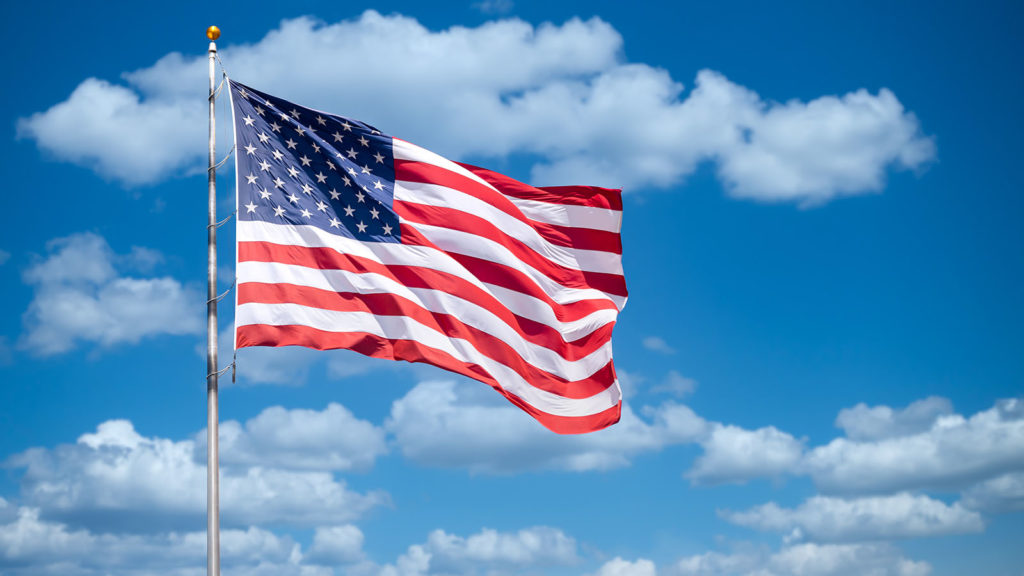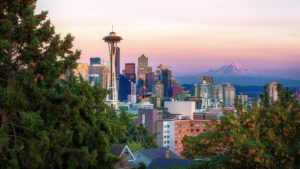The Electronic System for Travel Authorisation, or ESTA, is the digital gatekeeper of the United States. If you plan to visit the US for business or leisure, there’s a good chance you’ll need approval through ESTA first.
Skip that crucial step and you can forget about visiting the lounge. In fact, you won’t even get past your airline’s check-in desk. So it pays to plan ahead.
Who needs an ESTA?
If you’re visiting the United States, there’s a good chance you’ll need to get an ESTA. That covers most Australian citizens jetting across the Pacific on business or on holiday, for stays of up to 90 days.
Planning to stay longer on a single visit? You’ll need a pre-arranged visa instead. Also note, that ’90 day’ clock doesn’t reset just by travelling from the US across the border to Canada, Mexico or nearby islands. It only resets once you’ve ventured further afield – such as back to Australia.
For example, let’s say you travel to North America and start with 20 days in the US. You then venture up to Canada for 15 days, down to Mexico for another 12 days, and then enter the United States for a second time. When you land in the US on that second visit, you’ll only be able to stay for a maximum of 43 days. That’s your initial 90 days, minus the time you’ve just spent in North America.
But if you were to return to Australia – or visit somewhere else far away, like South America, Europe or Asia – and then re-enter the US, you’ll start with a fresh 90 days all over again. That remains true even if your second visit takes place within 90 days of your last.
If you don’t have a passport from an eligible visa-waiver country (or a US passport), you’ll need a formal US visa instead. That’s regardless of your reason for travel, or how long you plan to stay.
Some travellers from visa-waiver countries, including Australia, may also need a visa for certain purposes. When travelling on a visa (a sticker in your passport), or as a US citizen on a US passport, ESTA isn’t required.
When do you need both a US visa and an ESTA?
Every time you travel to the United States, you can only enter under one specific category. That is, each US border crossing is tied to one specific purpose.
If you have a student visa, for instance, you’d need to use that visa to enter the US when you plan to study. For this, you don’t also need an ESTA – you’ll just use that visa.
But if you were also planning a separate holiday or business trip to the US, and wouldn’t complete any study on that trip, an ESTA is required. That’s true irrespective of whether you have a US visa for a different purpose.
When you arrive in the United States, just advise a Customs and Border Protection officer of your purpose of visit. They’ll process you under the most suitable category, based on your reason for entry on each visit.
How much does an ESTA cost?
The price of an ESTA has increased in recent years: it’s now US$21 per person. That’s about AU$32, and your ESTA remains valid for two years or until your current passport expires.
As the ESTA approval is linked to a specific passport, you’ll also need a new ESTA if you plan to visit the USA using a new or different passport.
During its validity period, you can travel to the United States as many times as you like for tourism or business. Provided, of course, you comply with the ’90 day’ rule above. You also don’t need a separate ESTA to visit on business if you applied as a tourist, and vice versa.
Payment can be made using credit cards or PayPal, and the amount is charged in US dollars. Australians can use Visa, Mastercard and American Express cards.
American Express Platinum Card
How to get an ESTA for the United States
You can apply for your ESTA online from the comfort of home. But be very careful to only apply through the official ESTA website. As you might see from a quick Google search, there are plenty of unofficial alternatives ready and waiting to take your money – and your personal information.
These websites typically charge a higher price for the same service. Some may also take your details and your money without lodging an ESTA application at all, leaving you stranded at check-in.
Do yourself a favour and apply though that official website only. You’ll save yourself time, money and hassle, and won’t be giving away your private information to a third party, either.
On the real website? Good. You can apply for your ESTA as soon as you’re even thinking about travelling to the United States. You don’t need to have any flights or hotels booked, or to have a firm travel date.
You’ll be asked to provide a street address where you intend to spend your first night in the United States. But this can be changed later, and is also declared through your airline at check-in time.
What you need in order to apply
It helps to have a few details and documents ready when applying for your ESTA. You’ll need at least:
- Your passport (or at the information from the photo page).
- Your home address.
- A phone number.
- An emergency contact, and their information.
- A list of other names you’ve previously used.
- Depending on your responses, you might be asked for your employer’s details.
- To be prepared to make yes/no declarations in response to specific questions.
Separate to the above, you’ll also be asked for the usernames (but not passwords) of various social media accounts. For ESTA applicants, this question remains optional – but providing that information may prove useful in verifying your identity and reasons for travel.
For instance, a traveller planning a business trip to the US might choose to share their LinkedIn username on the application form. Especially if that account lists information about their employment history and qualifications – which might support their reasons for travel.
But again, that question remains optional. If a traveller chooses to leave this section blank, US Customs and Border Protection (CBP) advises that ‘the ESTA application can still be submitted without a negative interpretation or inference.’
How long ESTAs take for approval
In the past, ESTA applications were often approved instantaneously. While speedy processing can still occur, a safer bet is to allow 72 hours for your approval to be granted.
Until that approval comes, you won’t be able to board or even check-in for a flight bound for the United States as a visa-waiver traveller. Given ESTAs are valid for multiple trips across a two-year period, we’d suggest applying as soon as you plan to travel.
If you forget about the ESTA requirements and turn up at the airport, there’s a reasonable chance you’ll miss your flight – and nobody wants that drama!
When a decision has been made about your ESTA application, you’ll receive an email. You can also use the official ESTA website to confirm the status of your application, as well as your ESTA validity.
There’s also a very small chance that your ESTA application may be declined. This doesn’t prevent you from travelling to the US entirely. But it does mean you’ll need to apply for a US visitor visa instead.
The visa application is much lengthier than for ESTA. First-time applicants also need to visit a US Consulate for an interview and to have their fingerprints scanned. But that’s not the hardest part.
Once you’ve done the paperwork, getting an appointment is what adds the biggest delay. In Sydney, appointment wait times for visitor visas (B1/B2) currently sit at 73 calendar days. In Melbourne, it’s 63 calendar days – although in Perth, it’s seven calendar days. That’s still anywhere from a week to more than two months spent waiting just to get an appointment!
What’s the difference between ESTA and Global Entry?
You might have heard of Global Entry. That’s the United States’ trusted traveller program for international flyers. Those approved enjoy a streamlined airport experience – but it’s not currently available to Australian citizens.
There’s been a lot of talk about making Global Entry available to Australians. But it’s been talked about for almost five years and yet, there’s still no action. Those who only have an Australian passport still don’t qualify for Global Entry.
Regardless though, Global Entry is separate from your permission to cross the US border. If you don’t have a US passport, you’ll again need either an ESTA or a pre-arranged US visa. Global Entry is just something that can be added on for speedier processing.
Summing up
Whether you’re heading to the United States on business or for leisure, chances are, you’ll need to acquaint yourself with the ESTA process.
Unless you have a US passport or a US visa, you can’t simply turn up at the airport for a US-bound flight. You’ll need to have been approved through the ESTA system before you can even check in.
Behind the scenes, your airline automatically verifies your ESTA status, visa validity and passport before issuing a boarding pass. If you’re not cleared to fly, it’s ‘computer says no’.
To be fair, the ESTA process isn’t hard – and it’s much easier than getting a proper visa. But as ESTA approvals aren’t always instantaneous, it certainly pays to apply early. Especially if there’s any reason you think you might be denied and need to apply for a visa via the Consulate instead.
Also read: Travel hack: transit Vancouver when travelling to the USA
Feature image courtesy of Brett Sayles/Pexels.
Stay up to date with the latest news, reviews and guides by subscribing to Point Hacks’ email newsletter.







Great article and very informative.
Could I please get confirmation on a couple of upcoming trips.
I have a current ESTA for a trip to Las Vegas in October. My employer has asked me to head to Texas for a few weeks in September for business. I’m employed and paid by my Australian employer.
– Is my ESTA valid for both trips?
– For my business trip, when I arrive, I assume I’d tell customs I’m there for business and explain my employment situation?
– On my ESTA I gave my contact details as the hotel in Las Vegas we are staying at. Will I need to provide a business contact for my business trip also?
Thanks again for the article
Our article answers some of the points of your questions. If you need any further clarification beyond that, you’d need to direct your questions to US Customs and Border Protection, the Department of Homeland Security or a US Consulate or Embassy. Safe travels!
What if one has two passports – can you get an ESTA linked to each passport (and pay twice, of course – I get that bit)?
Asking because one of them is eligible for setting up a Global Entry, and the other is not.
Thanks.
YEP , CORRECT . Could not even check in .
In an Information for New Players ….. you even need an ESTA when JUST transiting the airport in the USA . Basically if you and / or your plane touches US soil , you need an ESTA . Even if you are NOT entering the US !!!! We learnt that the hard way .
“ The U.S. Department of State designated Cuba as a State Sponsor of Terrorism (SST) on January 12, 2021.With limited exceptions, a traveler who is found to have visited Cuba on or after this date is not eligible for travel under the Visa Waiver Program (VWP) using an Electronic System for Travel Authorization (ESTA) and must apply for a visa to travel to the United States. ”
https://www.cbp.gov/travel/international-visitors/visa-waiver-program/visa-waiver-program-improvement-and-terrorist-travel-prevention-act-faq